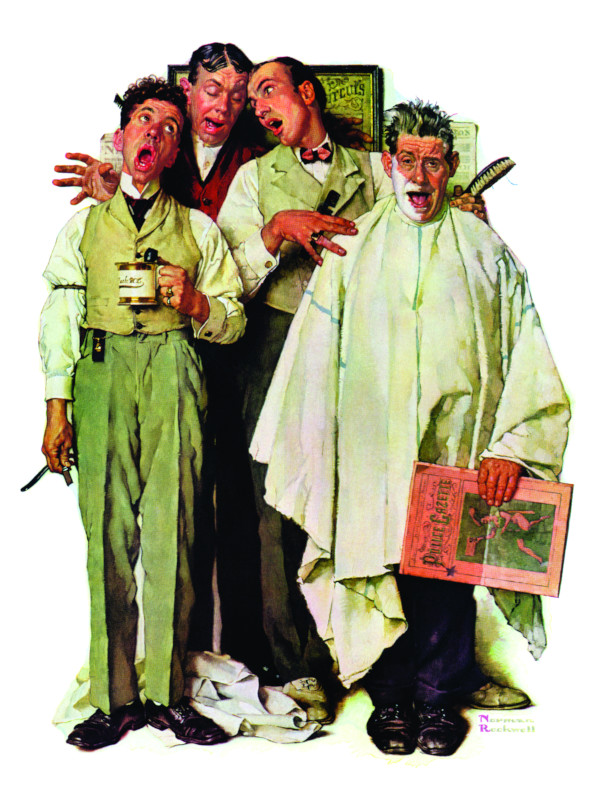Rockwell knew the appeal of nostalgia, and how Americans loved evocative images from America’s past. So when he painted long-ago scenes for the Post, he’d include historical details that added authenticity to the image. For this 1936 cover, he turned to an era he often referenced in his works: the turn of the 20th century or slightly before it. To fix the tableau firmly in the 1890s, he shows the men wearing shirts with the stiff, detachable collars of the time. The rear singer sports the “curtains” hair style of the turn of the century. The strongest hint of the era, though, is the pink-sheeted Police Gazette in the customer’s hand. At the time of this scene, it was probably the best-known tabloid paper in America, and fairly notorious. It carried lurid stories of murders, massacres, scandals, and sporting events that would never appear in a respected periodical. It was a familiar sight in barbershops where women and children would not see it. It eventually disappeared from most barbershops after parents started bringing their children to get a trim — often replaced by the far more acceptable Saturday Evening Post.

This article is featured in the March/April 2021 issue of The Saturday Evening Post. Subscribe to the magazine for more art, inspiring stories, fiction, humor, and features from our archives.
Featured image: Norman Rockwell / SEPS
Become a Saturday Evening Post member and enjoy unlimited access. Subscribe now



